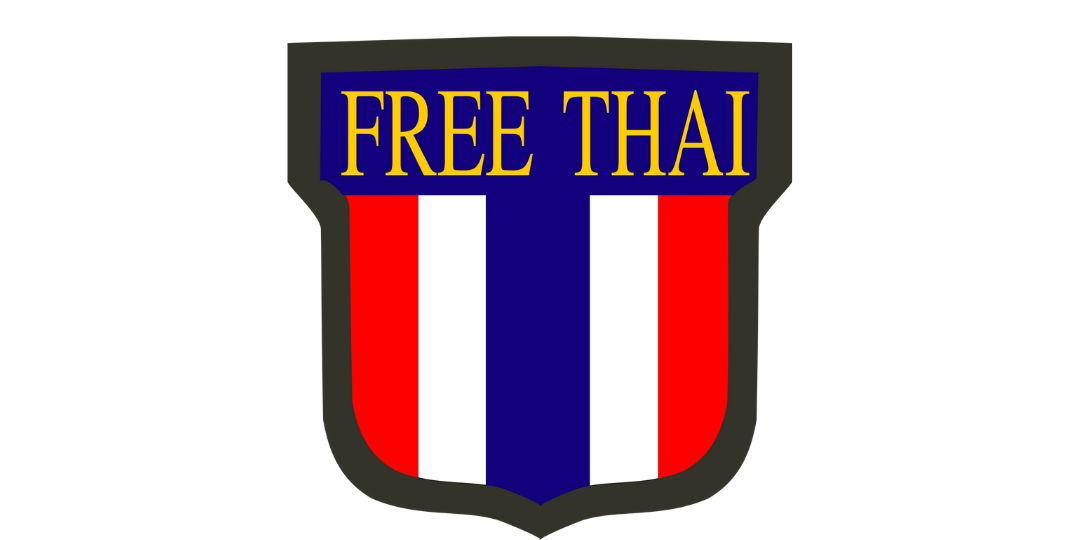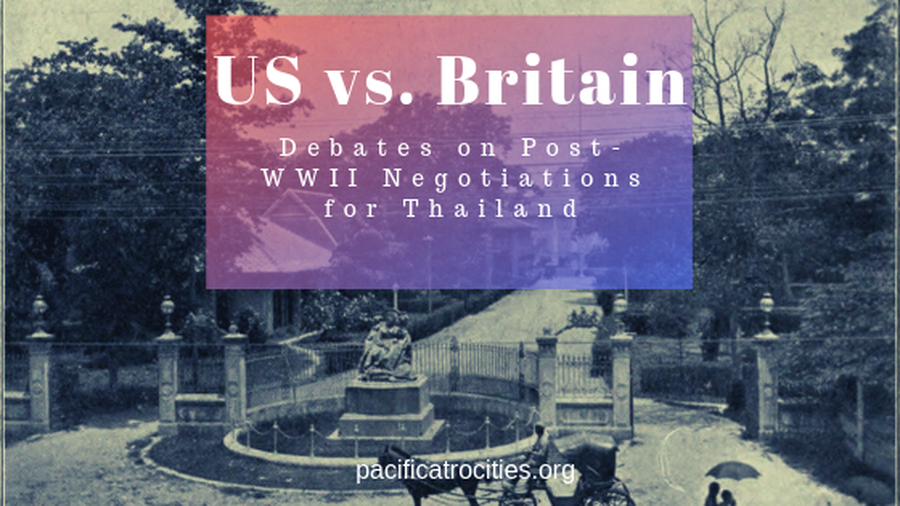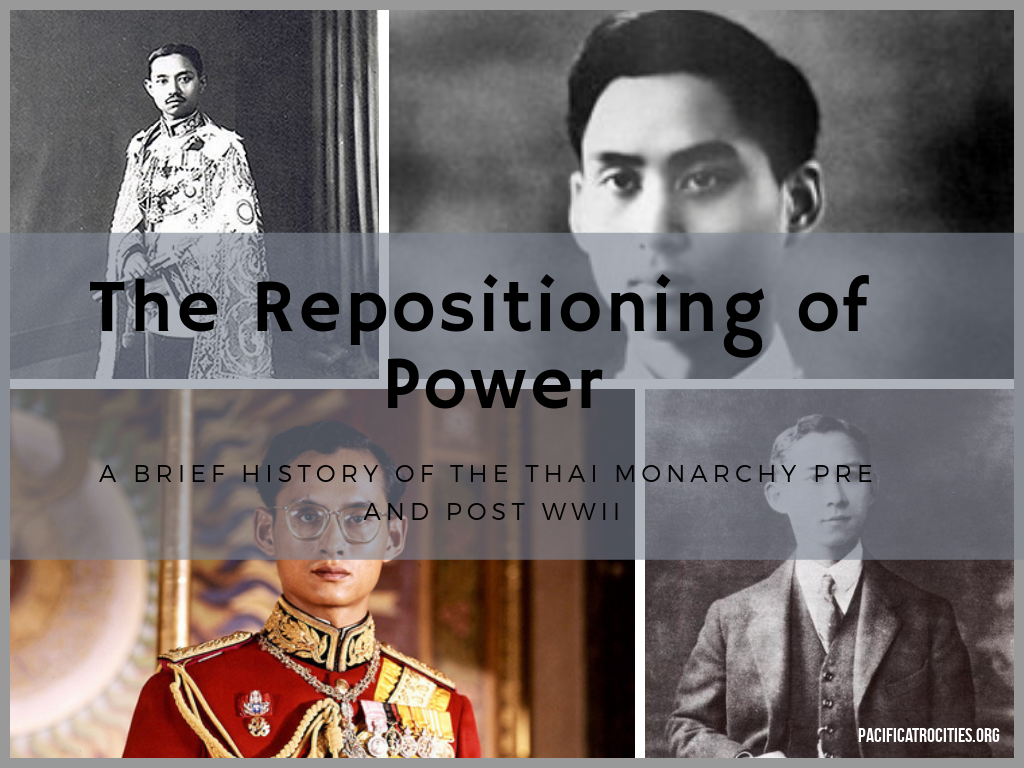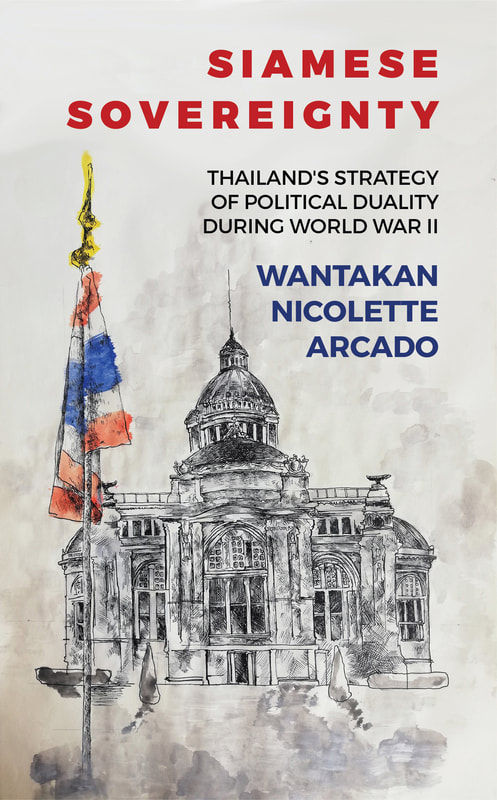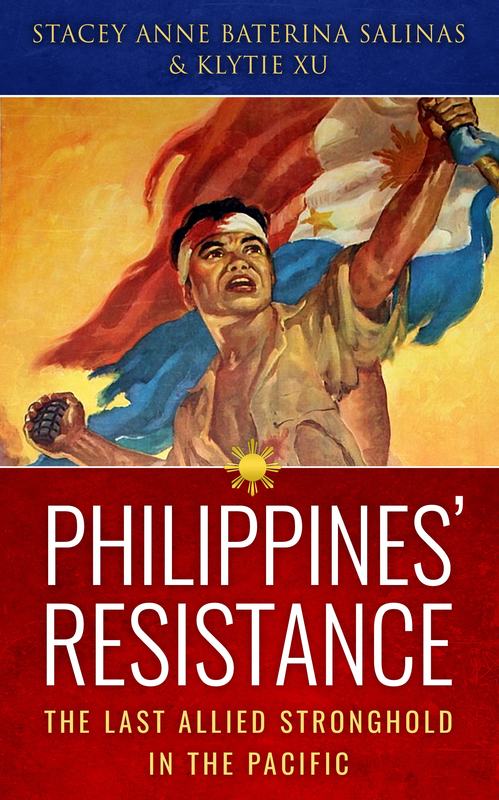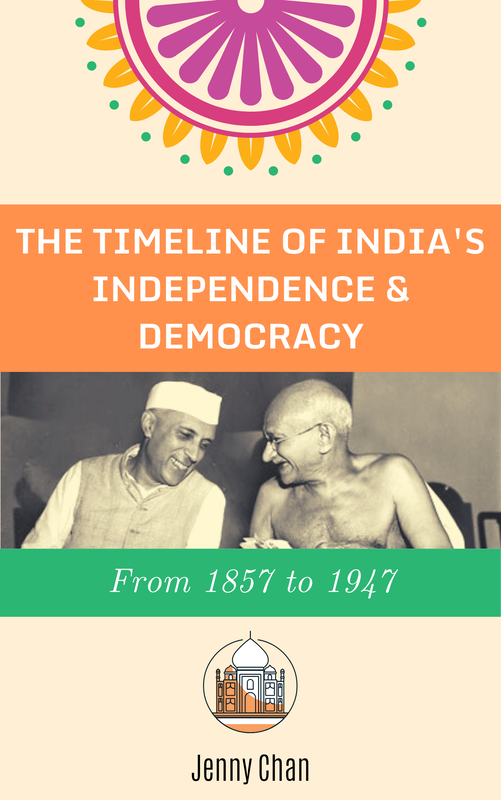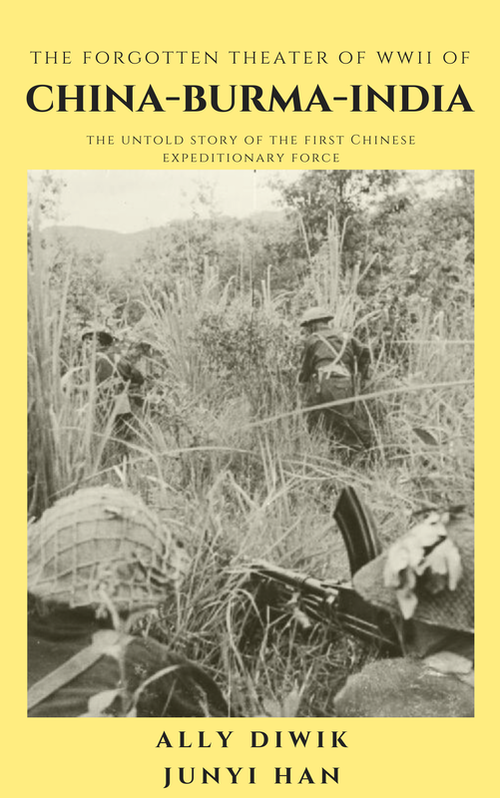|
In contingent with the bombing of Pearl Harbor in the last month of 1941, the Japanese Imperial Army marched into Southern Thailand from Malaysia, calling for free passage into the country.
The Beginnings
(continued) Phibun Songkhram, both Commander and Chief of the Royal Thai Army and the Prime Minister at the time, allowed Japanese entry, vowing to maintain Thai independence in lieu of Japan's colonial activities enacted against neighboring Southeast Asian countries. As Japanese troops within the country and demands to utilize Thai facilities and resources increased, Thailand was now fully engulfed by the war. By January 1942, Bangkok declared war on Great Britain and the United States.
On the opposite side of the globe, Thai students studying in the United States were facing a predicament; their country had declared an alliance with an Axis power and they were studying within the confines of a now declared, Allied nation. Thailand’s Ambassador in Washington, M.R. Seni Pramoj, refused the Thai-Japanese alliance. While his colleague in Britain announced Thailand’s declaration of war, Seni Pramoj refused to deliver the declaration to the U.S. government. In response, the U.S. also refrained from declaring war against Thailand. Through Seni Pramaoj’s leadership, a coalition of overseas Thai was built that would support the Allied war efforts. Thai university students studying in MIT, Harvard, and Cornell were recruited to work with Gen. William Donovan’s United States Office of Strategic Services (OSS), a wartime intelligence agency that was a predecessor to the CIA. The Free Thai Movement was thus born. War Time Operatives:
Although the Seri Thai Movement’s activities were mostly done underground, over 50,000 Thai Volunteers underwent excruciating training and dangerous missions and treks to collect and report finding to supporters in China and other areas of Indochina. While some made it back to their designated bases to report on the Japanese Army’s location, others were either captured, killed, or disappeared. Ironically, Thai nationals were walking on thin ice in their own homeland.
The movement’s main base of operations was in Phrae Province, under the jurisdiction of Pridi Panomyong and Thong Kantatham. Pridi, the Regent of Thailand and founder of Thammasat University, was already well known in Thai politics for his involvement with the Siamese Revolution of 1932 which changed the system of government from that of an absolute monarchy to a constitutional monarchy. Both men led and launched Operation Hotfoot and Operation Numeral, parachuting operations that helped deploy weapons, supplies, and medicine to supporting troop members. The lives of Thai volunteers were constantly endangered, having to navigate around Allied bombing campaigns, rescuing fallen foreign soldiers, avoiding Japanese detection, all while broadcasting findings and weather reports to partners in the U.S. Finally, on October 5, 1944, the OSS Detachment in Szemao, China, received an important radio message from Free Thai agents in a safehouse based in Bangkok, allowing Allied forces to be dispatched in strategic locations within the country via submarine, airdrop, or seaplane. By 1945, the war was over in Thailand. Seri Thai not only became a crucial source of military intelligence for Allies hoping to win back the Southeast Asian region, but paved the way for the country’s post-war independence a few years to come. Post-war:
Due to the contributions of the many volunteers within the Free Thai Movement, the U.S. refrained from prosecuting Thailand as an enemy country in post-war tribunals and peace negotiations. On September 2, 1945, many Seri Thai members received the Medal of Freedom from the U.S. government including: Air Chief Marshall Tavee Julasup, Major General Boonmark Tesabutr, Commander Vimol Viriyavidh, Mr. Piset Pattaphongs, M.C. Yuthisatien Sawadivatana, M.L. Ekachai Kumpoo, Mr. Anond Srivardhana, Dr. Sala Tsanond, Air Marshal Sith Savetsila, Mr. Umnuay Poonpipatana, Mr. Udomsak Pasavanij, Mr. Kusa Punyarchun, and Mr. Somjit Yos-sunthorn.
Various monuments and local attractions were installed to celebrate Seri Thai’s achievements throughout the war. The Free Thai Movement Museum (พิพิธภัณฑ์เสรีไทย) is located on Yantarkitkosol Road, Phrae, Thailand, purposefully as a dedication to the town’s importance as the base of operations for the Seri Thai Movement. The museum highlights military maneuvers and covert operations conducted by both Thais and U.S. soldiers alike. The museum is privately financed by Puchong Kanthatham, son of Thong Kanthatham, the leader of the Free Thai movement in Phrae. More recently in 2017, the U.S. Ambassador to Thailand and his Thailand staff members visited Phrae to learn about growing vocational opportunities as well as to pay respects and celebrate U.S.-Thai relations during the war. While it has been about 74 years since the end of the war, undoubtedly, the continuous bond built between the two nations are growing stronger than ever.
References:
https://www.cia.gov/news-information/featured-story-archive/2008-featured-story-archive/free-thai-movement.html The Thai Resistance Movement During The Second World War, John B. Haseman, Chalermnit Press, Bangkok. http://www.insigne.org/OSS-Thai.htm https://th.usembassy.gov/ambassador-davies-visits-phrae/ Related ArticlesRelated Books
0 Comments
Leave a Reply. |
- Home
- Stories
-
Internship
- Summer 2024 Internship
- Summer 2023 Internship
- Fall 2022 Internship
- Summer 2022 Internship
- Summer 2021 Internship
- Fall 2020- Spring 2021 Internship
- Summer 2020 Internship
- Fall 2019 Internship
- Summer 2019 Internship >
- School Year 2018-2019 Internship
- Summer 2018 Internship >
- Fall 2017 Internship
- Summer 2017 Internship >
- Books
- Archives
-
Resource Page
-
Supplementary Research Guides
>
- Unit 731 - Guide >
-
Philippines' Resistance - Guide
>
- Philippines World War II Timeline
- The Japanese Invasion & Conquest of the Philippines
- Bataan Death March
- Formation of Underground Philippines Resistance
- Supplies of the Guerrilla Fighters
- The Hukbalahap
- Hunter's ROTC
- Marking's Guerrillas
- United States Army Forces in the Philippines of Northern Luzon (USAFIP-NL)
- The Aetas
- Chinese and Filipino-Chinese Nationalist Guerrilla Units
- The Female Faces of the Philippine Guerrillas
- Rising Sun Flag - Guide >
- Pinay Guerrilleras - Guide >
- Fall of Singapore - Guide >
- Three Years and Eight Months - Guide >
- Siamese Sovereignty - Guide >
- The Khabarovsk War Crimes Trial - Guide >
- Unit 731 Cover-up : The Operation Paperclip of the East - Guide >
- Marutas of Unit 731 - Guide >
- Prince Konoe Memoir - Guide >
- Competing Empires in Burma - Guide >
- Battle of Shanghai - Guide >
- Ishi Shiro - Guide >
- Taiwan The Israel of the East - Guide >
- Seeking Justice for Biological Warfare Victims of Unit 731 - Guide >
- Rice and Revolution - Guide >
- Clash of Empires - Guide >
-
Hunger for Power and Self-SufficiencyI - Guide
>
- The Influence of War Rations on Post-War Culinary Transformations
- How World War II Complicated Food Scarcity and Invention
- American Military Innovations
- Government-Sponsored Food Inventions in Europe during World War II
- Feeding the Army: The Adaptation of Japanese Military Cuisine and Its Impact on the Philippines
- Mixed Dishes: Culinary Innovations Driven by Necessity and Food Scarcity
-
Denial A Quick Look of History of Comfort Women and Present Days’ Complication - Guide
>
- The Comfort Women System and the Fight for Recognition
- The Role of Activism and International Pressure
- The Controversy over Japanese History Textbooks
- The Sonyŏsang Statue and the Symbolism of Public Memorials
- Activism and Support from Japanese Citizens
- The Future of Comfort Women Memorials and Education
- Echoes of Empire: The Power of Japanese Propaganda - Guide >
- Lesson Plans >
-
Supplementary Research Guides
>
|
Pacific Atrocities Education
730 Commercial Street San Francisco, CA 94108 415-988-9889 |
Copyright © 2021 Pacific Atrocities Education.
We are a registered 501 (c)(3) charity. |
- Home
- Stories
-
Internship
- Summer 2024 Internship
- Summer 2023 Internship
- Fall 2022 Internship
- Summer 2022 Internship
- Summer 2021 Internship
- Fall 2020- Spring 2021 Internship
- Summer 2020 Internship
- Fall 2019 Internship
- Summer 2019 Internship >
- School Year 2018-2019 Internship
- Summer 2018 Internship >
- Fall 2017 Internship
- Summer 2017 Internship >
- Books
- Archives
-
Resource Page
-
Supplementary Research Guides
>
- Unit 731 - Guide >
-
Philippines' Resistance - Guide
>
- Philippines World War II Timeline
- The Japanese Invasion & Conquest of the Philippines
- Bataan Death March
- Formation of Underground Philippines Resistance
- Supplies of the Guerrilla Fighters
- The Hukbalahap
- Hunter's ROTC
- Marking's Guerrillas
- United States Army Forces in the Philippines of Northern Luzon (USAFIP-NL)
- The Aetas
- Chinese and Filipino-Chinese Nationalist Guerrilla Units
- The Female Faces of the Philippine Guerrillas
- Rising Sun Flag - Guide >
- Pinay Guerrilleras - Guide >
- Fall of Singapore - Guide >
- Three Years and Eight Months - Guide >
- Siamese Sovereignty - Guide >
- The Khabarovsk War Crimes Trial - Guide >
- Unit 731 Cover-up : The Operation Paperclip of the East - Guide >
- Marutas of Unit 731 - Guide >
- Prince Konoe Memoir - Guide >
- Competing Empires in Burma - Guide >
- Battle of Shanghai - Guide >
- Ishi Shiro - Guide >
- Taiwan The Israel of the East - Guide >
- Seeking Justice for Biological Warfare Victims of Unit 731 - Guide >
- Rice and Revolution - Guide >
- Clash of Empires - Guide >
-
Hunger for Power and Self-SufficiencyI - Guide
>
- The Influence of War Rations on Post-War Culinary Transformations
- How World War II Complicated Food Scarcity and Invention
- American Military Innovations
- Government-Sponsored Food Inventions in Europe during World War II
- Feeding the Army: The Adaptation of Japanese Military Cuisine and Its Impact on the Philippines
- Mixed Dishes: Culinary Innovations Driven by Necessity and Food Scarcity
-
Denial A Quick Look of History of Comfort Women and Present Days’ Complication - Guide
>
- The Comfort Women System and the Fight for Recognition
- The Role of Activism and International Pressure
- The Controversy over Japanese History Textbooks
- The Sonyŏsang Statue and the Symbolism of Public Memorials
- Activism and Support from Japanese Citizens
- The Future of Comfort Women Memorials and Education
- Echoes of Empire: The Power of Japanese Propaganda - Guide >
- Lesson Plans >
-
Supplementary Research Guides
>
